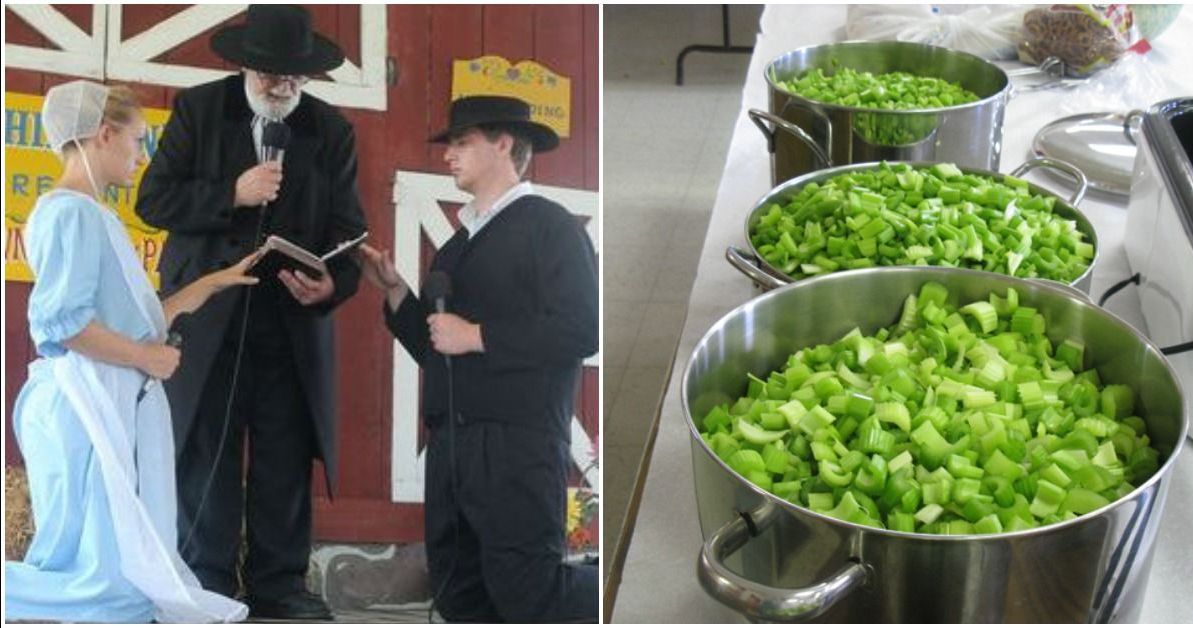I can't say exactly why, but I've always been fascinated by the Amish and their unique culture.
It's so interesting to think that in our age of smartphones and computers, some people still do things the old fashioned way.
In fact, Amish culture is very unique. And they do just about everything differently from outsiders - or "English" - like us.
Nothing demonstrates that better than Amish wedding traditions. They're not what you would expect:
1. Timing is everything

Many Amish communities are still farming communities, and the changing of the season plays a big role in the daily lives of Amish folk.
Traditionally, Amish weddings take place in autumn - after the harvest - but with so many marriages some communities now hold them year-round.
Wedding days are "published" at church just a few weeks before the ceremony, so couples rush to plan and prepare.
And the favorite day to hold a wedding is Thursday - which is a day off for the community.
2. Secret engagements
Married couples are usually in their early 20s - because Amish are baptized as adults after finishing Rumspringa as teenagers.
Instead of rings, young Amish men propose to their brides with something more practical - a musical clock, or dishware.
Then, the engagement is kept a secret until it's published at church.
During that time, the couple have a limited number of "dates" each month, and usually communicate mainly by letter.
But there are ways to spot an engaged Amish couple if you know how: women start preparing their wedding dresses, and families grow a lot of celery for the reception dinner.
3. The bride
The bride does sport a new dress on her wedding day, but don't expect it to be white.
While this is wedding tradition to us, it's an extravagance to the Amish.
So are frills, lace, buttons, and other details.
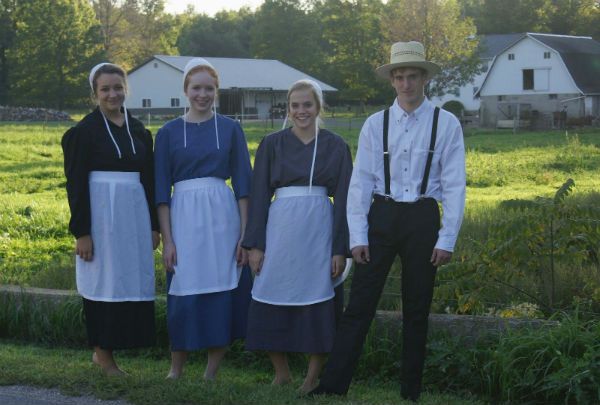
Instead, the bride makes a plain (but beautiful) dress of a single color and fabric, following Amish custom.
In some communities, new brides exchange their white bonnets for black ones - to signal they're married.
Her husband and their families sometimes wear shirts or dresses that match the fabric and color of her wedding dress.
And this dress isn't stashed in the attic after - the bride will wear it to church each week, and sometimes save it for her own funeral.
4. The wedding party
There is no best man or maid of honor in an Amish wedding - equality among members of the community is important to them.

But the bride and groom do choose a team of newehockers (or "sidesitters") to help with the ceremony.
Those include ushers, cooks, servers, and even note-takers to record their wedding sermon.
Whether or not they wear matching outfits depends on how modern the Amish community is (some consider that extravagant).
5. The ceremony
If you had a religious service, this is one of the most familiar parts of an Amish wedding for us "English."
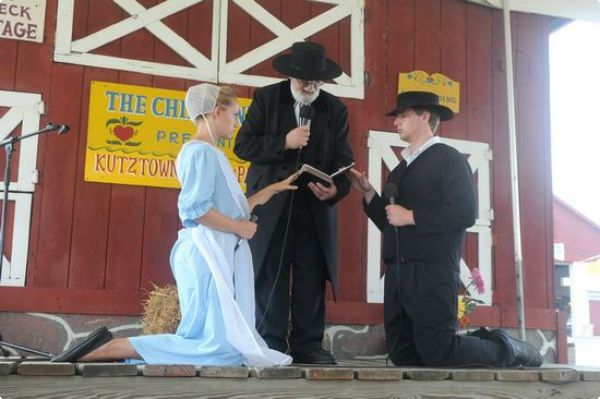
The church bishop reads from the Bible and other holy books like the Tobit, and reads a long sermon to the congregation.
The guests will sing hymns, but there are no instruments.
It's common for a wedding ceremony to stretch over three hours.
6. The reception
Amish weddings are a busy day, and there's usually both a reception following the ceremony and a community meal later that evening.
While the ceremony is usually Amish only, some communities allow English guests at the reception.
Just like any other wedding, the couple and their family sit at the table of honor, but tradition plays a part here too.
The bride and groom sit at the corner's table (the Eck) with the bride on the groom's left hand side. The pair will sit the same way when they ride in a buggy.
7. The wedding meal
Usual fare at an Amish wedding includes roast chicken, mashed potatoes, vegetables and gravy.
Celery casserole is also very common, and trays of celery are placed among the guests to snack on.

Cakes are still taboo in many Amish ceremonies, but traditional Amish varieties like cheesecake are common.
Baked goods like cookies and squares are also familiar.
Preparing all that food for hundreds of guests with antique technology is not easy, and some communities break tradition by having the reception catered or by renting a kitchen trailer.
As for liquor - the rules are slightly different from one Amish community to the next.
8. Traditions
As the guests enjoy their meal, there's time for all kinds of wedding traditions - but no bouquet tosses or garter removals.
Couples often make special napkins, or commemorative pens with the wedding date inscribed on them for their guests.
The guests will sing hymns, and the bride and groom will move through the crowd passing out sweets.
A favorite game at Amish weddings is matchmaking: the bride bosses around teenage guests, pairing up boys and girls to sit together.
Amish girls are reportedly very upset if they don't get paired up with the boy they like.
Finally, from this day on the groom starts growing his beard - a sign to his community that he is a married man.
9. Gifts
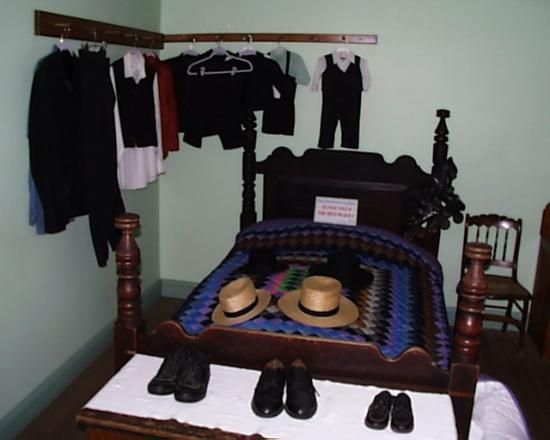
While Amish couples don't get stand mixers or blenders, the gift-giving tradition at their weddings is close to ours.
Usually the couple receives a lot of dishes, cookware, tools, household goods, and canned food.
It's also common for a couple to get a suite of bedroom furniture built by their families or local craftsmen.
10. The honeymoon

The Amish live apart from the rest of the world, and marriages are about celebrating their community.
So where do Amish couples go on their honeymoons?
Not very far.
The day after the wedding, they get up early to help tidy the church, or the property where they had their wedding.
They'll spend the next few days visiting family members, and getting to know their new relatives.
11. Pranks
Yes, the Amish have a sense of humor!
Pranks and jokes on the newlyweds are an important part of any Amish wedding.
Guests may hide a mousetrap in the salad bowl, or carry the couple's bed into a nearby field.
Friends of the bride and groom may stay up all night throwing stones at their window, and singing songs to keep them awake.
12. Til death do they part
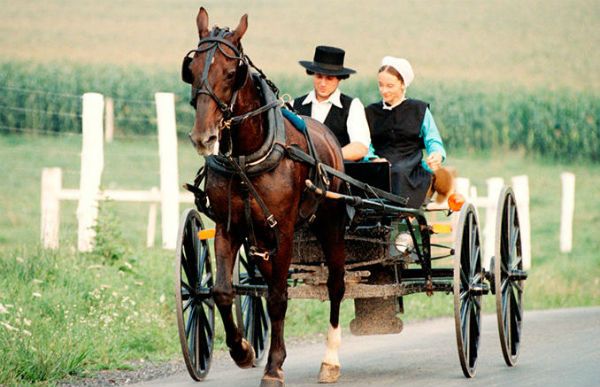
The Amish do not have divorce.
A married couple move into a new home soon after their marriage, and are expected to stay together through thick and thin.
But a widow or widower is allowed to married - and usually encouraged to.
Meanwhile, Amish couples who simply can't make things work usually live apart from each other.
Were you surprised by any of these traditions?
[H/T: Lancaster Online, Love to Know, Amish Reader, Lancaster PA.com]
